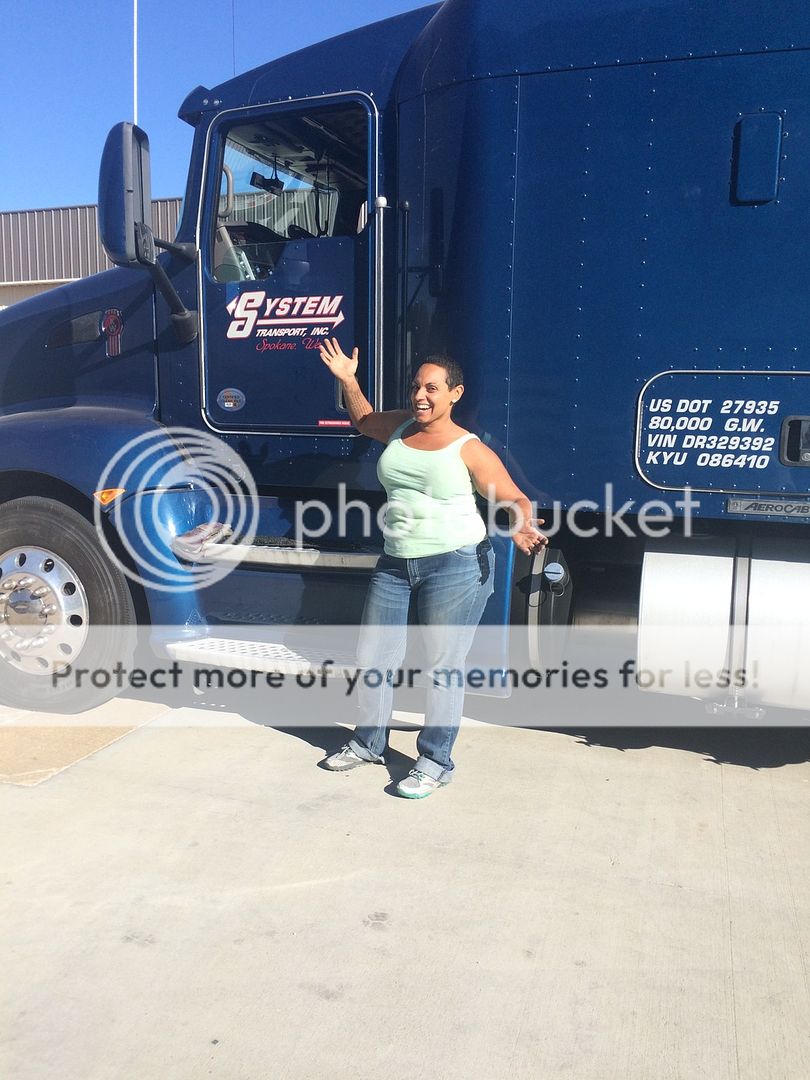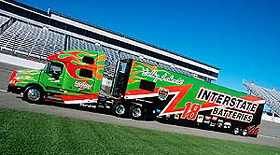Tractor Protection Valve Vs Trailer Hand Valve Vs ....
Topic 9036 | Page 1

Just for clarification: on page 53 of the HRTP, Step 2 (Uncoupling) says to "shut off trailer air supply to lock trailer brakes." That's what really did me in because I don't know which button or lever or pulley or piece of twine to push, pull, or yank on to get this done....

The brake chamber has two sections,both receiving air from the compressor on the truck.one side has a huge spring inside,which applies. Or moves the rod,connected to the slack adjuster to apply the brakes. this happens when air is removed from that side of thebrake chamber. When you pull the red knob,air which is holding back the spring from doing its job,is removed,and the spring applies the trailer brakes.

The emergency brake air hose (red),is always supplying air to the trailer system,the blue supply line only carries air when you actuate the foot pedal,which moves the pushrod,which applies the brakes,using the second side of the brake chamber.
HOS:
Hours Of Service
HOS refers to the logbook hours of service regulations.
If you were to become unhooked from your trailer,while running down the road.air loss would apply the trailer brakes_(spring), Stopping the trailer. The tractor protection valve in engine compartment would close,leaving you air to actuate the foot brake and stop the tractor.

I think I might have it figured out. But to make sure I'm going to post a diagram after I get done with work. I know it seems silly to be this concerned over getting this right, but I feel like it's one if those things where if I learn it wrong, it'll take forever to get it straight again. Thanks for your feedback Xcelerationrules!
HOS:
Hours Of Service
HOS refers to the logbook hours of service regulations.
No diagram needed! Just needed to write it out on my own after spending the day thinking about it and looking over the responses:
Trailer Service Brakes = Trailer Hand Valve lever (which many newer trucks no longer have) = Service line which runs to trailer brakes, blue line
Trailer Emergency Brakes = Trailer Air Supply Control Valve/Tractor Protection Valve (red knob) = Supply/Emergency line which runs to the trailer emergency brakes, red line
Parking Brake = yellow knob, never to be engaged simultaneously with brake pedal
Why that was so difficult to grasp is beyond me but thanks for your patience :) Now I can sleep easy!

Parking Brake = yellow knob, never to be engaged simultaneously with brake pedal
Huh? This is wrong. When your going to stop and park..... Once you are where you want to park you press in the clutch to disengage the transmission and apply the foot brake. Take truck out of gear, while still applying the foot brake, you set the parking brake. At this time you release the foot brake.
If you release the foot brake before setting the parking brake you could start rolling.

Parking Brake = yellow knob, never to be engaged simultaneously with brake pedal
Huh? This is wrong. When your going to stop and park..... Once you are where you want to park you press in the clutch to disengage the transmission and apply the foot brake. Take truck out of gear, while still applying the foot brake, you set the parking brake. At this time you release the foot brake.
If you release the foot brake before setting the parking brake you could start rolling.
I was wondering about that, but this is what the HRTP says on page 43:
"Parking Brake Controls
In newer vehicles with air brakes, you apply the parking brakes using a diamond-shaped, yellow, push-pull control knob. You pull the knob out to put the parking brakes (spring brakes) on, and push it in to release them. On older vehicles, the parking brakes may be controlled by a lever. Use the parking brakes whenever you park.
Caution: Never push the brake pedal down when the spring brakes are on. If you do, the brakes could be damaged by the combined forces of the springs and the air pressure. Many brake systems are designed so this will not happen. But not all systems are set up that way, and those that are may not always work. It is much better to develop the habit of not pushing the brake pedal down when the spring brakes are on."
Maybe that means that once you've applied the parking brakes like you're describing, you're not supposed to push the brake pedal down again after that?
HOS:
Hours Of Service
HOS refers to the logbook hours of service regulations.
Ok the clears that up. If your parking brake are already set then no you don't use the foot brake. Could cause damage.
The only exception to this rule is right before setting parking brake and right before releasing parking brake to prevent rolling. V
But if parking brake is already set then yes they are right...
This is just one of the million this in trucking that have exceptions to them. Never are there clear black and white. Trucking is a Hugh gray area on a massive scale.
This is also why we stress understanding every word on the test and how it's used.
New Reply:
New! Check out our help videos for a better understanding of our forum features

















Preview:
This topic has the following tags:
Women In Trucking







 TT On Facebook
TT On Facebook
Good morning!
I am doing the HRTP and am having a heck of time separating out the difference between the tractor protection valve, trailer hand valve, parking brake, and trailer air supply control. I've gotten really high marks on the test questions but have to go back and find the answer every time instead of just being able to visualize them each and answer. The way my brain is processing it is that the protection valve and trailer brakes both have to do with the emergency line. The protection valve will either activate or deactivate the air supply to the emergency line which keeps the trailer brakes on (activated) or off (deactivated). And if the protection valve does that, then what the heck does the trailer handle valve do? I've read the sections over and over...taken a break and come back to it...slept on it, dreamt about locking the trailer brakes, jacknifing and sliding into a filling station...woken up, re-read it....still lost. I know one is a red button (which I think is the trailer air supply control which controls the tractor protection valve which is used to activate the emergency brakes to the trailer, emergency line) and one is a yellow button (which I think is the parking brake but I don't understand how that's different from the emergency brakes) and one is a handle (trailer hand valve). And if you're not supposed to use the trailer hand valve for parking or driving, then is its only purpose to test the trailer brakes? I feel silly for even asking but being able to brake properly and knowing which one to use and when is (in my mind) crucial.
I don't want to get to school and not know this stuff, but maybe this something that I'll understand better when I actually see it? Does anyone have tricks to remembering the difference?
Anyways, thanks so much for your help! Hope you're having a great day!
OWI:
Operating While Intoxicated